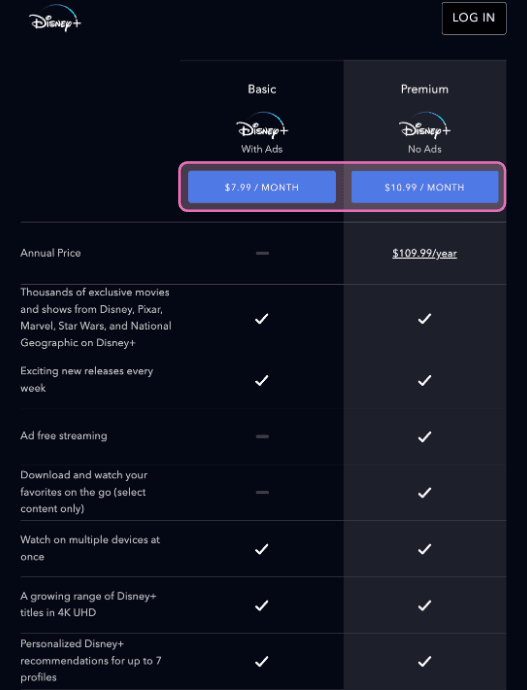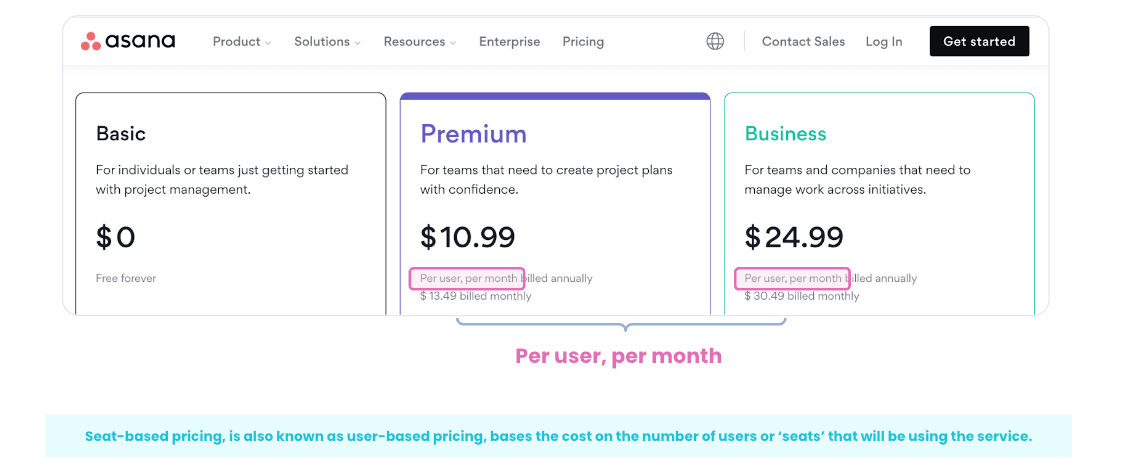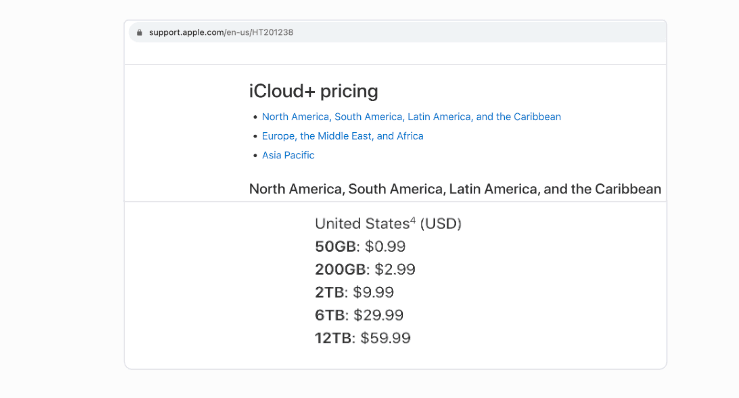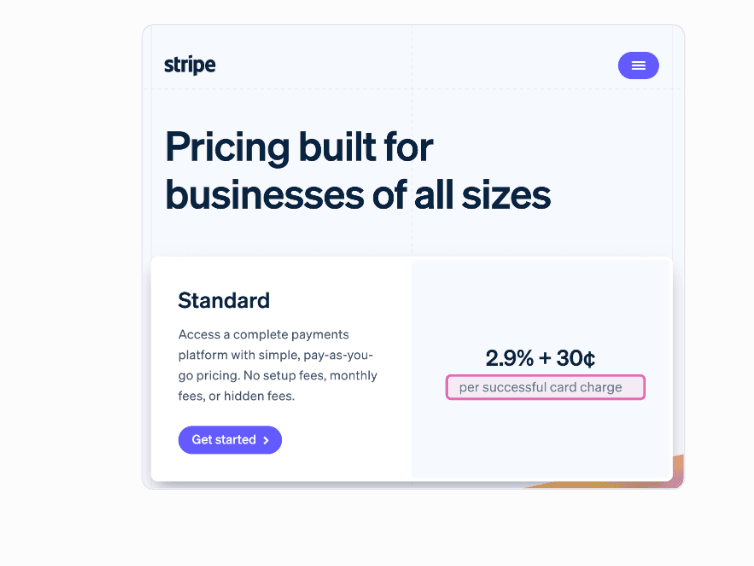Updated: October 16, 2025- 19 min read
You’re probably familiar with the 4 Ps of marketing: Product, Place, Promotion, and Pricing. While each "P" plays a unique role in defining how a product reaches its audience, pricing is what ultimately determines its perceived value and position in the market. A well-crafted pricing strategy doesn’t just drive revenue; it solidifies a product’s positioning, communicates the product's value to customers, and serves as a key differentiator from competitors.
Within product marketing, pricing is the bridge between the product itself and the market it serves. For Product Marketing Managers (PMMs), pricing often becomes a key responsibility—one that requires balancing data-driven insights with a deep understanding of customer behavior and market dynamics.
In this article, we’ll unpack why pricing is central to product marketing, explore common approaches to pricing, and outline 10 pricing strategies every marketer should be ready to leverage.
Product Launch Checklist
Launch is a critical time that can make the difference between product success and failure. Use this checklist to make sure nothing falls through the cracks.
DOWNLOAD CHECKLIST
What Is Product Pricing and Why Is It Important?
Pricing is the amount users pay for a product or service. Product pricing is a crucial aspect of product marketing strategy for several reasons:
Revenue and Profitability: The price of a product directly impacts the revenue generated by its sales. Appropriate pricing is essential for ensuring profitability balancing the cost of production, promotion, and other expenses.
Market Positioning: Pricing plays a significant role in positioning a product in the market. A higher price might position a product as a premium offering, while a lower price could appeal to cost-sensitive customers. This positioning influences how consumers perceive the brand and its products.
Competitive Strategy: Pricing is a key factor in competitive strategy. Product Marketing Managers must consider the pricing strategies of competitors to ensure their products remain competitive. They may choose to price products lower than competitors to gain market share or higher to signify superior quality.
Market Segmentation: Different market segments may have varying willingness to pay. Effective pricing helps in targeting these segments appropriately, potentially with different pricing strategies like premium, economy, or value pricing.
Adaptability and Flexibility: Market conditions change, and with them, the optimal pricing for a product. Product Marketing Managers must be adept at adjusting prices in response to market shifts, consumer trends, and economic factors.
Legal and Ethical Considerations: Pricing must also adhere to legal and ethical standards. Avoiding practices like price fixing and predatory pricing is essential to maintain a positive brand image and avoid legal repercussions.
In summary, pricing isn’t just about setting a cost for a product; it's a multifaceted strategy that impacts various aspects of a product's market success, from its positioning and perceived value to its competitiveness and profitability.

Who Is Responsible for Product Pricing?
Ownership of pricing and packaging varies from company to company. That said, here are the four most common departments that will likely own pricing and packaging:
Product Marketing
Product Management
Revenue/Finance teams
Sales Operations
Pricing & packaging is a specialized function that PMMs are only responsible for at some companies. If you’re a PMM working with self-serve products, B2C, or Product-Led Growth (PLG), you’re more likely to be more involved in pricing and packaging efforts. Most notably, PMMs are often responsible for helping customers move from one package to the next — including converting free to paid users.
Whether your role as PMM includes pricing and packaging ownership or not, understanding the foundations can give you a competitive edge.
10 Product Pricing Strategies with Examples
Here's an idea that was really inspirational to me. At the end of the day, pricing is just friction, and the question is, how much friction do you want to project onto your users? Clearly, too much friction will mean users won’t even try it out. Too little friction, you're leaving money on the table.
— Alvaro Morales, CEO at Orb on The Product Podcast
1. Cost-plus pricing
Cost-plus pricing is a pricing strategy where a company sets the price of a product by adding a certain percentage or fixed amount, usually based on the desired profit margin on top of the production cost.
In other words, they calculate how much it costs to make or procure the product and then add some extra to determine the selling price.
Example: If an apple costs a grocery store $1.00 from the orchard and the company wants a 25% margin, it sells for $1.25.
Pros:
It’s easy to understand and implement.
It ensures a predefined profit on every sale.
Cons:
It doesn’t consider the customer’s willingness to pay.
It may result in overpricing or underpricing.
2. Competitive Pricing
Competitive pricing is a strategy where a company sets the price of its product or service based on what other similar products in the market are charging.
In other words, it's about keeping your price in line with what your competitors are charging to attract customers or stay competitive.
Example: Gas stations in close proximity to each other often implement competitive pricing and offer their gas at the same price (or a few cents cheaper than the other!)
Pros:
It’s simple to determine what your pricing is.
It’s low risk, as you’re offering prices in relation to what’s currently on the market.
Cons:
It may result in profit losses by selling your product short of its potential (simply by copying others).
It assumes that everyone else has already determined the “right” price, which may not be true.
3. Economy pricing
Economy pricing is when a company sets a low price for its product or service. In other words, it's all about offering the product at a budget-friendly cost, often by minimizing frills or features, to attract price-sensitive customers. This method focuses on the volume of sales rather than maximizing profit per unit.
Example: Walmart has always focused on low prices and has the slogan “Save Money. Live Better”.
Pros:
It can lead to increased sales volume and market share.
It appeals to a large segment of cost-conscious customers.
Cons:
The low prices result in reduced profit per unit.
Low costs are sometimes perceived by customers to be synonymous with low quality.
4. Premium pricing
As a direct contrast to economy pricing, premium pricing is a strategy where a company sets a higher price for its product or service. In other words, the company positions the product as offering superior quality or unique features, and customers are willing to pay more for these added benefits. Premium pricing targets consumers seeking exclusivity and perceived quality.
Example: Apple’s iPhone and Macbook are often priced higher than brand competitors' comparable models because Apple bets on brand value (and loyalty!), design and ecosystem benefits (i.e. the ability for other Apple devices to work harmoniously together).
Pros:
Selling at higher price points means greater profit margins per unit sold.
It elevates a brand’s image to be perceived as premium or luxury.
It leads to buyer loyalty, brand advocacy, and, as a result, consistent sales.
Cons:
The high price point may exclude a large segment of potential customers.
It requires constant care and attention to meet and exceed customer expectations in order to justify its price point.
5. Good-best-better pricing
The good-better-best pricing strategy offers three tiers of a product or service at increasing price points, each providing more value or additional features. The "good" tier is the most affordable and basic option, the "better" tier or tiers add improved features and the "best" tier provides the highest value and includes premium features. This strategy caters to different customer segments based on their willingness to pay.
Example: Netflix offers three subscription plans:
Standard with ads: Provides HD streaming with ads on two devices.
Standard Plan: Includes HD streaming without ads, plus the option to download content for offline streaming on up to two devices.
Premium Plan: Offers ad-free streaming on up to four devices simultaneously in Ultra HD (4K) resolution and downloads on up to six devices.
Pros:
Appeals to different customer segments and their corresponding preferences and budgets.
Potential to upsell existing customers in the good and better segments.
Cons:
Multiple tiers can overwhelm users, complicating decision-making.
A "good" tier that’s too basic might negatively impact the perception of the overall brand quality.
6. Penetration pricing
Penetration pricing is a strategy where a company initially sets a low price for a product, as the goal is to quickly gain a foothold in the market and attract a large customer base. Over time, the company may gradually raise the price or introduce complementary products or services to increase revenue. In other words, the company sets pricing to cast a wide net, build loyalty, and increase pricing over time.
Example: Uber’s early strategy of offering lower prices than standard taxi fares helped to pull users away from traditional ride services and onto their platform.
Pros:
It can quickly establish a company’s brand identity in a competitive marketplace.
Its attractive pricing can lead to quick adoption and referrals among users.
Its pricing makes it difficult for higher-priced options to compete.
Cons:
It may result in profits being sacrificed in the short term for long-term gain.
Future price increases can lead to customer backlash.
7. Price skimming
Price skimming is a strategy where a company sets a high price for a new product when it's introduced to the market to target early adopters and customers willing to pay a premium. Over time, the price is gradually lowered to attract a broader customer base as the product becomes more established. In other words, a company begins with a higher price point to promote “premium” status and lowers it over time as it becomes more popular to appeal to the masses.
Example: Gaming consoles like Xbox or Playstation are often released at a premium price. As months pass and their “new” status wanes, the price is reduced to make it more accessible to a wider audience.
Pros:
Early adopters who pay a premium help boost launch revenues.
It creates a larger (multiple) customer segment to target over a product’s lifecycle.
Cons:
If this strategy is repeated with each new product, it may encourage some customers to wait for prices to drop, delaying potential sales.
It may encourage competitors to undercut their prices to attract customers unwilling to pay the high initial price point.
8. Loss leader pricing
Loss leader pricing is a strategy where a company sells a product at a price lower than its cost to attract customers, with the expectation that they will also purchase other, more profitable products. In other words, it’s offering low pricing to get customers interested in a product and taking the profit loss knowing that, once they’ve gotten started, they will buy more to make up for said loss.
Example: Gillette razors, when purchased as an initial bundle, sell the handle and blades at a very low price. However, replacement blades (which customers need to replace frequently) are sold at a much higher margin.
Pros:
It provides the potential to sell customers higher-margin items once they’re in the door.
It can deter competitors who cannot match the pricing strategy without taking substantial losses.
Cons:
It results in a significant hit to the loss-leading product.
It runs the risk of supplementary sales not occurring.
9. Dynamic pricing
Dynamic pricing is a strategy where the price of a product or service can change based on factors like demand, season, or customer behavior. In other words, a company will adjust prices depending on specific algorithms to optimize revenue.
Example: Most airlines adjust ticket prices dynamically based on factors such as remaining seats, time left until departure, competitor pricing, and time of year demand (such as holidays).
Pros:
It maximizes profits by capitalizing on high-demand periods and stimulates sales during low-demand periods.
It uses real-time market data to make informed pricing decisions.
Cons:
Price fluctuation can cause consumer frustration and perceptions of unpredictability and “being taken advantage of.”
It requires sophisticated data-tracking systems, algorithms, and regular monitoring.
10. Value-based pricing
Value-based pricing is a strategy where a company sets the price of a product or service based on the perceived value it offers to customers. In other words, the price is determined by how much customers believe the product is worth, rather than just the cost of making it.
Most B2B software companies adopt value-based pricing because they set their prices on what they believe are the perceived benefits the software delivers on, such as increased efficiency, cost savings or added competitive advantage.
Pros:
It shifts the focus from the cost of production to the product benefits.
It encourages a customer-centric approach, which can lead to a better customer experience.
It can lead to more profitability (in the case of software) due to low marginal costs.
Cons:
It can require research and trial and error to understand willingness to pay and perceived value.
It must account for changes to perceived value and frequent price adjustments.
Price strategy pros and cons
To recap, here are the pros and cons of each pricing strategy outlined above:
Pros
Easy to implement; Ensures predefined profit margin
Simple to determine; Low risk by aligning with competitors
Increases sales volume; Appeals to price-sensitive customers
High profit margins; Elevates brand image and loyalty
Caters to different segments; Offers upselling potential
Quick market foothold; Attracts large customer base
Boosts early revenues; Targets multiple customer segments
Attracts customers to buy other profitable products; Deterrent to competitors
Maximizes profits during high demand; Uses real-time market data
Customer-focused; Can lead to higher profitability with low marginal costs
Cons
Ignores customer willingness to pay; May result in over/underpricing
May undervalue your product; Assumes competitors have ideal pricing
Low profit margins; Perceived as low-quality
Excludes price-sensitive customers; High expectations to justify price
Complex decision-making for users; 'Lowest' tier may harm brand perception
Short-term losses; Future price hikes risk backlash
Encourages waiting for price drops; Risks being undercut by competitors
Significant losses on some products; Relies on supplementary purchases
Frustrates customers with price changes; Requires advanced tech systems
Requires extensive research; Needs frequent value reassessments
Combining multiple price strategies
It is important to note that you can leverage multiple of these pricing concepts simultaneously. They are not mutually exclusive. In fact, it’s often advantageous to combine pricing strategies. Many businesses use a hybrid approach to tailor their pricing to diverse customer segments, maximize revenue, and adapt to market conditions.
For example, Tesla combines premium pricing with dynamic pricing:
Tesla sets its baseline vehicle prices high, reflecting its positioning as a luxury, innovative electric vehicle brand, an example of premium pricing.
The company frequently adjusts prices based on production costs, material supply fluctuations (like battery components), and regional market demands, ensuring it stays competitive while protecting margins. This is a dynamic pricing approach.
Product Pricing Case Studies: Examples of Success and Failure
‘Good, better, best’ pricing at Netflix
At the beginning of 2022, Netflix made some significant changes to their pricing:
boosted their standard ad-free tier to $15.49
raised their premium tier to $19.99
added ad-supported, “affordable” tier for $6.99
eliminated their long-standing basic plan, which had cost $9.99
After announcing the changes, their stock rose by 3% when the changes were announced. Sure, 33% of users say they would cancel if prices get any higher, but that means two-thirds would shell out more. Even if they do cancel, on average, 25% of customers who do cancel end up resubscribing within a few months.
The market responded well to this price increase as it was clear that it was part of Netflix’s long-term plan to keep customers engaged by offering them a wider range of options based on the “good, better, best” pricing framework.
Providing customers with options that run that gamut from basic to standard to premium has important advantages. On the one hand, it covers a wider share of the market. Instead of choosing between economy versus premium pricing, you can cover both ends of the spectrum. In the end, most customers will choose the standard option when presented with three. In the case of the Netflix price increases, which they had no choice about, having some options as to which tier to select may have softened the blow.
Netflix continues to reign supreme in terms of total subscribers and subscriber growth, proving the value of its product and the success of its pricing strategy.
Backlash to dynamic pricing at Wendy’s
When it comes to communicating news such as a big pricing change, being clear, proactive, and direct is so important. Just explaining what's changing in a way that's really understandable is often a stumbling block.
— Alvaro Morales, CEO at Orb on The Product Podcast
Not every pricing strategy is a success, and, in fact, some show signs of distress before they’re even implemented. This was the case when customers caught wind of Wendy’s plans to implement dynamic pricing. It sounded like the fast food chain was considering surge pricing, meaning folks would have to pay more for a burger during the lunch rush than at other times.
The hubbub at Wendy’s underlines how important communication is when it comes to price changes. An investment-meeting slide making the rounds of major news outlets for the entire customer base to stumble upon is not great PR.
Wendy’s tried to clarify that it never intended to implement surge pricing, and some have pointed out that dynamic pricing can also mean lower prices when demand is down. This was little consolation to anyone who has tried to buy a plane ticket since the 1980s when the airline industry started implementing surge pricing.
Knowing your customers is also essential, and not every strategy is right for every company. Wendy’s patrons don’t go there to be surprised—they choose Wendy’s because they know what they’re getting and know they’ll get it at a reasonable price.
Pricing Strategy vs. Monetization Model vs. Pricing Model: What’s the Difference?
Our pricing strategy focuses on delivering more value than we charge. We balance seat-based and usage-based pricing to ensure fairness and simplicity for our users.
— Jaime DeLanghe, VP of Product & GM at Slack, on The Product Podcast
Monetization methods
Pricing and monetization are related concepts in revenue generation, but they serve different purposes and focus on distinct aspects of how a business captures value. As discussed above, a pricing strategy like value-based pricing or penetration pricing determines how much to charge customers for a product or service. The objective of the strategy is to balance profitability with customer demand to maximize revenue.
A monetization model or strategy is less about dollars and cents and more about how those sums will be generated. Some examples include:
Usage-based models
Freemium models
Advertising-based revenue
It’s not about how much to charge, but rather how to go about charging customers in the first place. The monetization strategy is often owned by product leadership, executives, and anyone tasked with product growth.
For example, Netflix monetizes using a subscription-based model (users pay recurring fees for access). As we’ve seen here, their pricing strategy is good-better-best pricing tiers (offering subscription plans at different price points for varying levels of service).
Pricing models
Not all monetization models are concerned with pricing. Meta’s products, like Instagram and Whatsapp, don’t have a price for end-users, but that doesn’t mean they aren’t monetized. However, some monetization approaches—Jaime DeLanghe mentioned a couple above—are particularly concerned with pricing and overlap with pricing strategies. They are sometimes referred to as pricing models. These include:
Subscription/Flat-Rate
As we've discussed above, a common pricing approach is a subscription or flat-rate model.
This allows customers to pay a fixed amount at a fixed interval (usually monthly or annually) for access to a product or service. An example is a streaming service like Netflix or Disney+ (as shown in the example below).

Subscription is a very common approach because it's simple and predictable, making it easy for users to budget for. Recurring, automatic payments are also a major advantage for businesses as it all but guarantees a certain amount of repeating revenue.
2. Seat-Based Pricing
Seat-based pricing focuses on charging a fixed amount for each person or “seat” that has access to a product or service. For example, Asana’s project management tool charges per user per month. This approach allows businesses to manage costs based on the number of users.
Because this model charges per user, this approach is also sometimes referred to as user-based pricing.

3. Usage-Based Pricing
A third common pricing model is usage-based pricing. In usage-based pricing, customers are charged based on how much they use a product or service, such as with home utility bills or iCloud pricing.

The more you use, the more you pay, so this model is useful for customers who want to be sure they are only paying for what they actually use.
The fact that the actual amount is not locked in advance is a a factor that you need to consider because many companies - and people - want predictability in what they’re going to pay.
Because this model focuses on the the metrics of user consumption to track value, this approach is also referred to as consumption-based pricing.
4. Transaction-Based Pricing
In transaction-based pricing, customers are changed for each specific action or transaction. An example is Stripe payment processing, in which the merchant pays a percentage of each successful transaction. It's a pay-as-you-go approach where the cost depends on each transaction.

Product Pricing: A Critical Point of Contact
Remember, as Alvaro Morales, CEO of Orb, was quoted as saying above, pricing is friction. Too little friction and you barely break even because you’re giving the product away. Too much, and you still only break even again, or worse, because you don’t sell enough. It’s all about finding that sweet spot at the top of the curve. Like any friction issue, communication is key. Customers have to understand the value of your product and what they’re going to get from it.
Pricing is a cornerstone of product marketing. From cost-plus to dynamic pricing, each strategy covered above offers unique benefits and challenges, making it essential to tailor your approach to your product and audience. Understanding how to combine strategies, like Tesla’s blend of premium and dynamic pricing or Netflix’s good-better-best tiers, can take your product to the next level. Pair the right strategies with the perfect monetization model, and you’re ready to go.
Whether refining an existing pricing model or exploring new approaches, the right strategy ensures your product resonates with customers without creating unnecessary friction. You know the lingo, and you understand the potential and the pitfalls, so go find that “sweet spot”!
Go-to-Market Certification
Create a winning GTM plan. Craft standout positioning, design messaging that sells, analyze markets, and drive post-launch momentum, all while leveraging the latest AI-first strategies.
Enroll now
Updated: October 16, 2025





